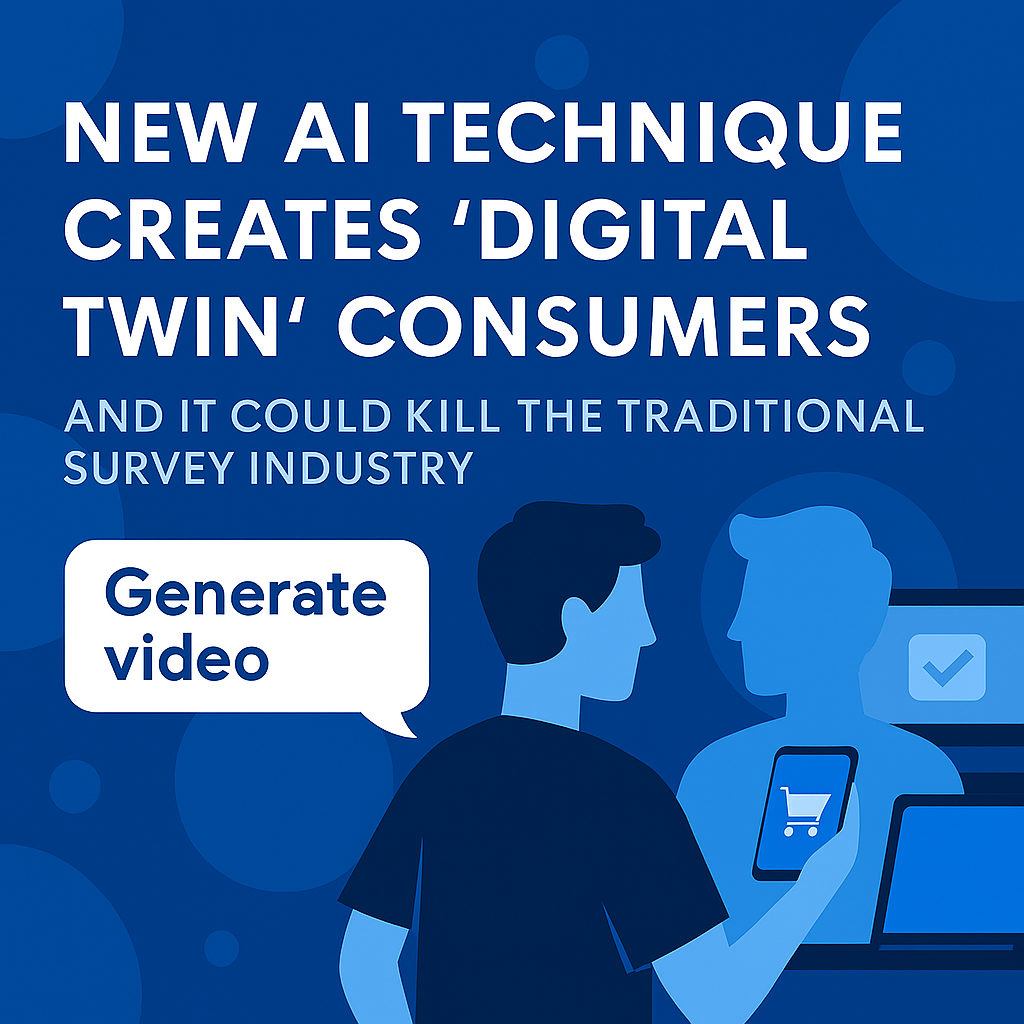Physical Address
304 North Cardinal St.
Dorchester Center, MA 02124
Physical Address
304 North Cardinal St.
Dorchester Center, MA 02124

The survey industry has long been the backbone of consumer research. From market segmentation to product feedback, surveys have helped businesses understand what people want, how they behave, and why they make certain decisions. But a new AI technique is poised to disrupt this decades-old model—and it’s doing so by creating digital twin consumers.
These AI-generated replicas simulate real human behavior, preferences, and decision-making patterns. And they don’t just answer questions—they act, react, and evolve. As this technology gains traction, the implications for market research, advertising, and product development are profound. The traditional survey may soon become obsolete.
Originally a concept from engineering and manufacturing, a digital twin refers to a virtual replica of a physical object or system. In the consumer context, it means creating a data-driven, AI-powered simulation of a real person—their preferences, habits, and even emotional responses.
These digital twins are trained on:
Once built, they can be used to test products, predict reactions, and simulate market responses—all without sending a single survey.
The core of this technique lies in generative AI and behavioral modeling. Here’s how it works:
Unlike surveys, which rely on self-reported data, digital twins act in real-time, offering behavioral insights that are more accurate and scalable.
Traditional surveys face several limitations:
Digital twins solve all of these problems. They’re always “on,” they don’t suffer from fatigue or bias, and they can be updated continuously as new data flows in.
The rise of digital twin consumers is already reshaping how enterprises approach research and development. Here are some key use cases:
Companies can simulate how thousands of digital twins would react to a new product, packaging design, or pricing strategy—before investing in a physical launch.
Digital twins can be used to A/B test ad campaigns, messaging, and channel strategies. Marketers can see which approach resonates best with different consumer segments.
Instead of relying on user feedback, designers can observe how digital twins interact with websites, apps, or devices, identifying pain points and preferences.
Retailers and platforms can use digital twins to predict what individual users might want next, enabling hyper-personalized recommendations and offers.
With great power comes great responsibility. The creation of digital twin consumers raises important questions about:
Leading AI companies are working to address these concerns by:
Still, regulation and oversight will be critical as this technology scales.
| Feature | Traditional Surveys | Digital Twin Consumers |
|---|---|---|
| Data Source | Self-reported | Behavioral + contextual |
| Accuracy | Moderate | High |
| Scalability | Limited | Massive |
| Real-Time Insights | No | Yes |
| Cost | High (per survey) | Lower (per simulation) |
| Bias Risk | High | Lower |
Digital twins offer a quantum leap in insight quality and operational efficiency.
As AI continues to evolve, digital twin consumers will become more lifelike, more predictive, and more integrated into business workflows. We may soon see:
This shift will redefine how companies innovate, market, and engage with their audiences.
The emergence of AI-generated digital twin consumers is more than a technological breakthrough—it’s a paradigm shift. By replacing static surveys with dynamic simulations, businesses gain access to deeper, more actionable insights. The result? Faster innovation, smarter decisions, and more personalized experiences.
But with this power comes responsibility. As we move toward a future where AI knows us better than we know ourselves, transparency, ethics, and consumer trust must remain at the core.
The survey industry isn’t dead yet—but it’s on notice.